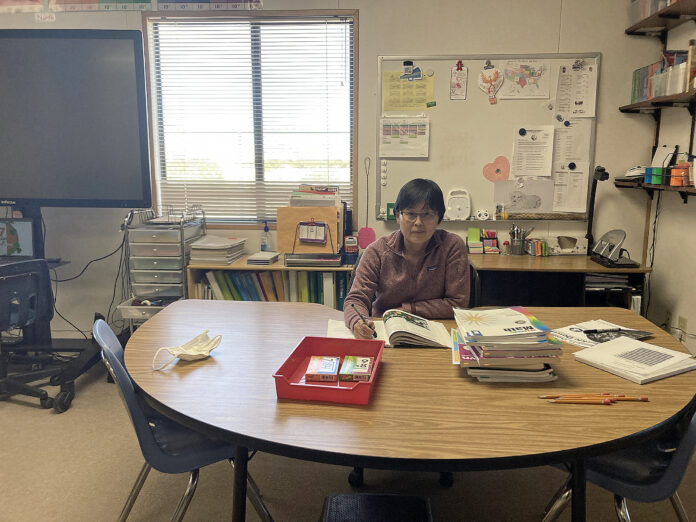
Teacher Quality is the Key Factor to Student Success. Students, especially those struggling in math and reading, or those in need of enrichment, need a teacher with experience and intervention skills that can only be developed over years of classroom experience.
Jodi Boich, a master teacher and native of South Korea, grew up in Hutchinson, Minnesota, and has more than 11 years of experience successfully teaching at many different grade levels. Her skill set also includes several years of teaching Montessori. As a mother of five children, Boich understands the importance of teacher quality and experience, “My instructional philosophy is to provide the right tools for successful learning.” Boich uses a variety of innovative and effective teaching methods to address the individual needs of her students. Boich utilizes critical thinking skills, visual, auditory, and kinesthetic learning modalities so that each students have the opportunity to master critical skills in a way that makes sense to them. Boich’s classroom also has state-of-the-art technology which she utilizes in her classroom so that her students are proficient in 21st century skills, including computer and digital device skills and typing.
A New Model for Middle School that Fosters Student Achievement: Having multiple classes and teachers can be confusing and difficult to navigate for middle school students. It often means many different sets of expectations, rules, behaviors, and homework which can be overwhelming and hinder learning. Mobile Elementary utilizes the single teacher model for middle school and according to Boich, the model has fostered incredible academic growth for her students. The single teacher model is especially effective for students who need more structure or need help with focus and attention to task. Teri Dominguez, the school administrator states, “with the single teacher model for middle school we have seen many students from larger and less structured environments make positive total academic turnarounds. Having one set of structured rules and academic expectations can make a huge difference for students who need it. Also having constant access to one-on-one and small group help from the teacher helps students understand the content and master the skills they need to be successful, learn, and grow at the middle school level.”
Small Class Sizes in Middle School are fundamental: Small class sizes make a big difference in developing higher level thinking skills. Reading is one of the fundamental skills young children learn in school, and even more so as students read for critical information in the middle grades. Often, students in other schools have experienced class sizes of 30 or more students, so the teachers were not able to focus on the needs of individual students or ensure that these fundamental skills have been mastered. Mobile Elementary strives to keep class sizes under 15 so that students can have the teacher attention, supervision, and guidance they need to excel in all subjects. Boich notes, “My middle school classroom is special to me because of the small class size. All the students get one-on-one help from me.” In her small class size multi-level classroom, Boich works closely with students to develop high level critical thinking skills and provides highly personalized intervention and one on one instruction to struggling students. This makes a huge positive difference her students’ achievement in reading and math, resulting in higher test scores and better overall grades. The small class size also allows her to differentiate instruction to meet the needs of advanced learners that need to learn by discovery and problem-solving techniques and foster social/emotional learning.
This sponsored content was first published in the April edition of InMaricopa magazine.












![Alleged car thief released without charges Phoenix police stop a stolen vehicle on April 20, 2024. [Facebook]](https://www.inmaricopa.com/wp-content/uploads/2024/04/IMG_5040-218x150.jpg)




